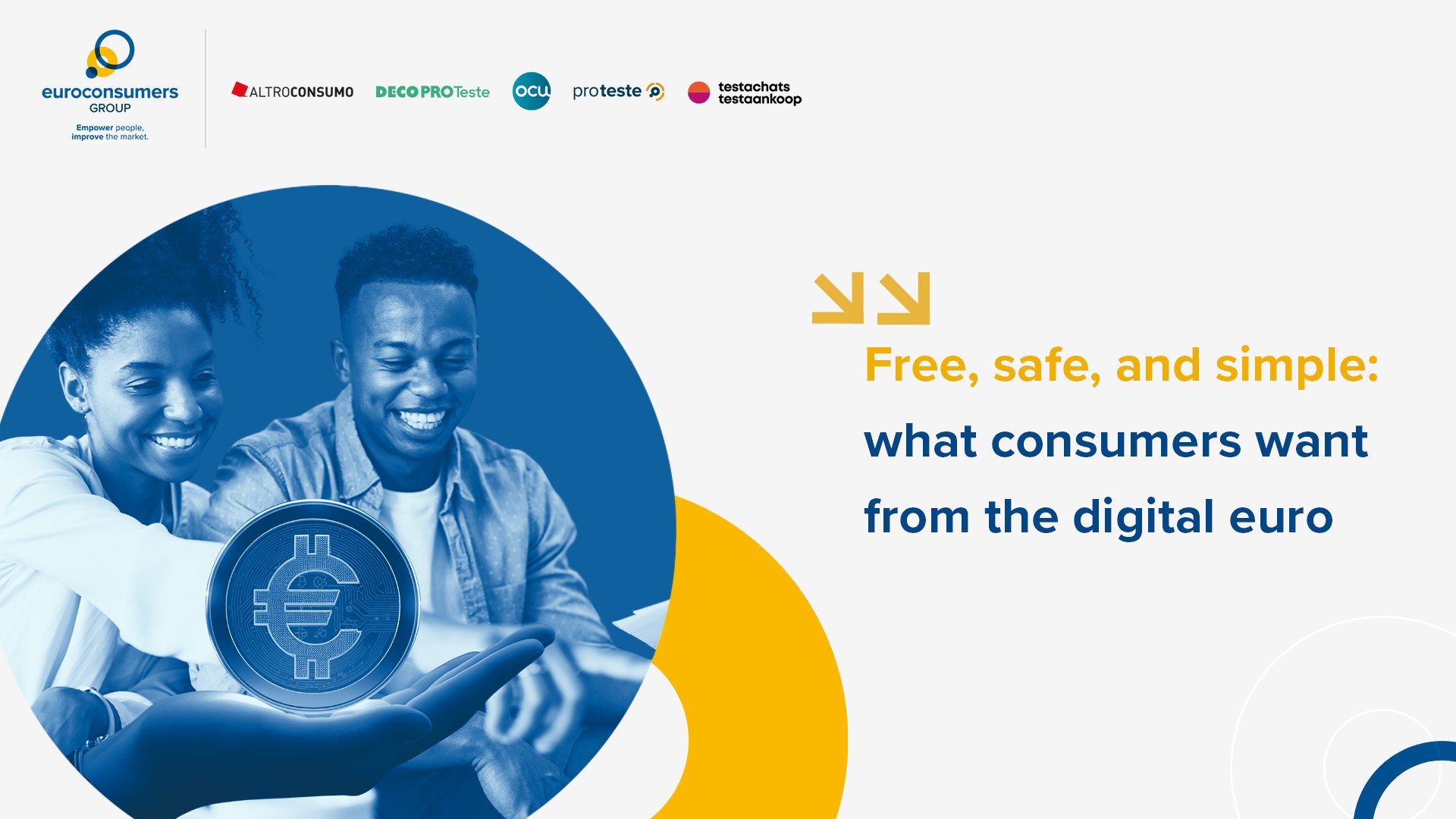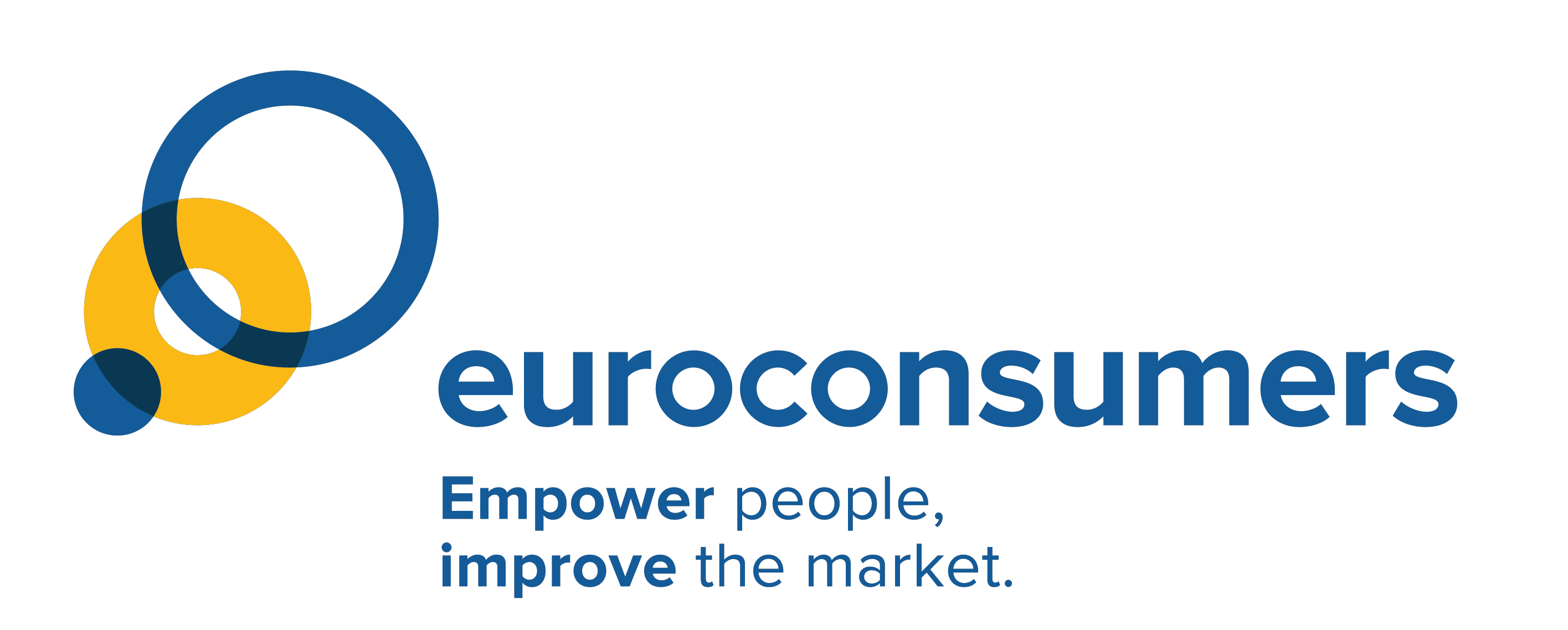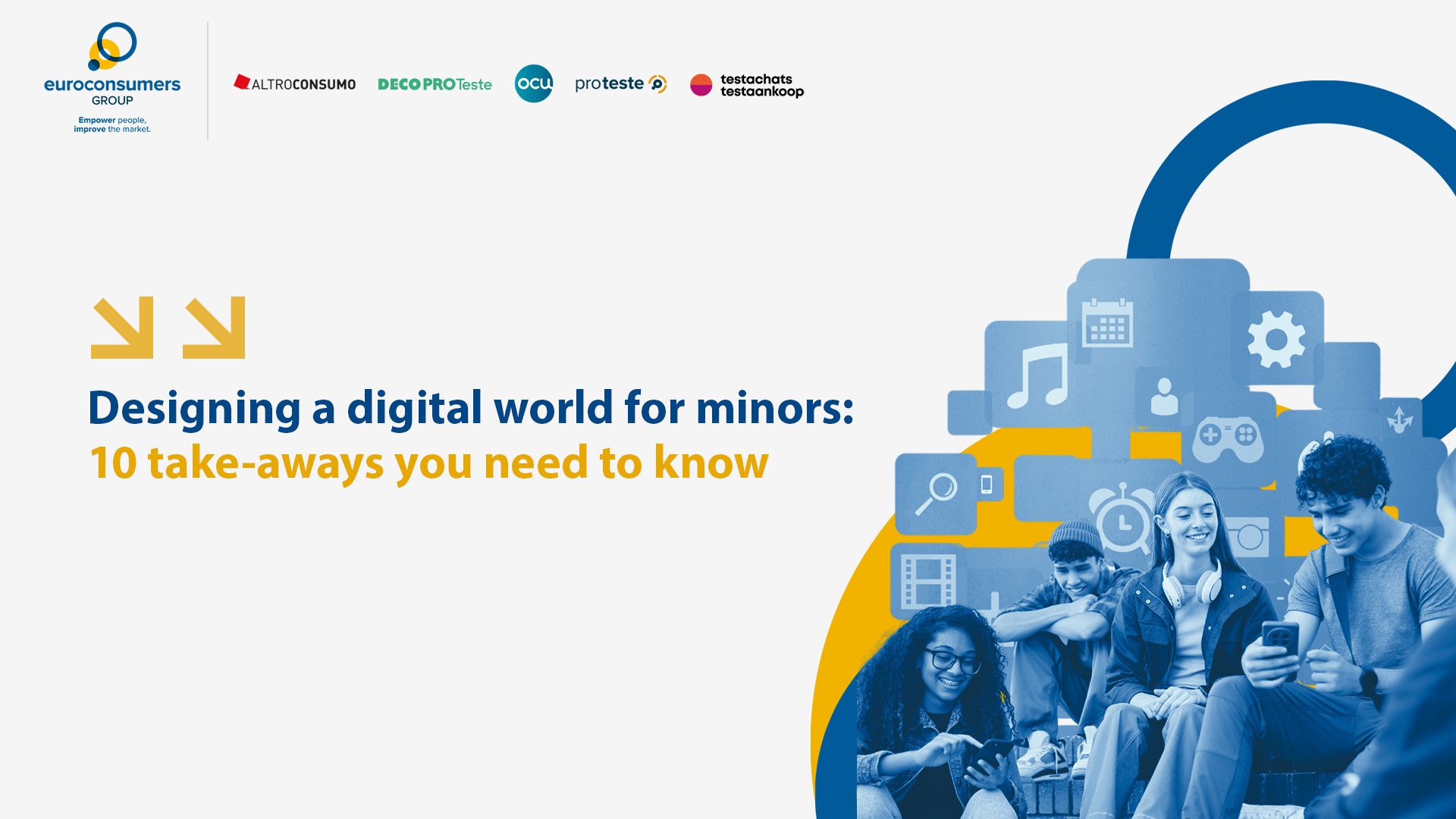
Free, safe and simple: What consumers want from the digital euro
New consumer research says reliability, security and ease of use will be key to the success of a digital euro
Read More


When it comes to creating policies for youngsters online, teenagers can feel that the whole world is talking about them but not to them.
Which is why Euroconsumers carried out a new multi-country survey of 3,351 teenagers aged between 12 and 17 years old in Belgium, Italy, Spain, Portugal and Poland to get a direct account of their experiences, concerns and wants for the future.
Euroconsumers’ ultimate goal is to empower young internet users and ensure their perspectives shape the creation of a fair digital ecosystem. Handing the mic to teenagers to hear their voices loud and clear is the best place to start.
This blog sets out the top ten takeaways from the survey. This is an essential read for anyone developing ‘minor-proof’ policy measures for young people online.
For young people, the internet is a gateway to new knowledge and skills, a practical tool, a source of creativity and a hive of social connection.
Life online is the norm for 12 to 17 year olds, on average they claim to be online for about 3.2 hours a day, with almost one in three (29%) logging on for more than 4 hours a day.
Teens’ usage of the internet reflects its place as an integral part of their lives, here’s the things they enjoy most about digital devices and the internet:
This connected generation is a dynamic one, constantly moving in and between online and offline life.
Their daily routine involves streaming, gaming, social media, video calls or web searching, but it doesn’t end there. For the vast majority, when the school day ends they meet with friends (95%), do sports (83%), take art or language classes (61%) or play a musical instrument (46%).
Contrary to popular assumptions, our survey found that the level of online activities does not seem to have a negative impact on teenagers’ participation in in-person activities:
More active teens who take part in a wide variety of after-school activities also practice a wider range of online activities and do it more frequently.
Despite the good times online, nearly half of those surveyed (46%) reported they had encountered some type of threat online including:
New innovations like Generative AI make life fun but also a bit harder, with over a quarter (26%) feeling unable to spot deepfake videos, and one in five admitting they struggle to detect fake news.
Teens are also honest about the fears they have of missing out when they’re not online, and some (36%) admit that the time they spend online takes a toll on their school work. Over a third of regular gamers say they have lost interest in hobbies or other activities because gaming was all they wanted to do (36%).
And, while a similar number reported no issues, these downsides to time online remain a big problem for some.
The frequency of these threats and anxieties means teens are aware of and try to make use of strategies to safeguard their online lives.
Over half (54%) of teenagers claim to be aware of what it means to be online, the same amount say they know how to protect their data online and just under half (48%) say they know what to do if they are a victim of cybercrime.
Many have an interest in developing healthy digital habits that give them the balance that’s right for them. Most (83%) of teens have some sort of parental restrictions or rules about their online activities.
There’s also appreciation for measures that empower them to keep themselves stay safe and in control, especially on social media:
It has to be noted though that of the nearly two thirds (63%) who say they are in control, nearly one in four spends over four hours online every day.
And still, only a third feel moderately informed about risks, and one in five have no idea what to do in the case of cybercrime.
The survey results showed that differences in gender, household income and educational background all shape how teenagers engage with the digital world.
For instance, minors from less affluent households tend to spend slightly more time online compared to their financially comfortable peers.
They are also a bit less inclined to regulate their screen time – 43% of them try to limit their time online, compared to 57% of teens from financially comfortable families who try to cut back. The survey also showed that use of parental controls in less affluent homes was 77% which is only slightly lower than the 86% for those in more affluent households.
Young users are increasingly cautious about how algorithms, targeted advertisements, and pop-ups might shape their behaviour or thinking, consume their time and impact their spending.
Yet the survey showed a varied picture – which is made even more mixed given that 42% of respondents did not even perceive that algorithms are regulating what they see in their feed:
So, although they see some value in algorithmically-curated content, two out of three (68%) say they want more control over what appears on their social media feed. Over half (52%) agreed apps should ask what they were interested in instead of tracking them. In short, they want to be able to decide for themselves.
Social media bans make headlines when problematic content and behaviours emerge – but given the integration of these social networks into teens’ lives, is it desirable or practicable?
First the facts:
Social media is clearly central to older kids’ lives and a ban might solve the bad experiences, but such a blunt instrument would also destroy their key channel of connection and communication with people and the world around them.
And it’s a possibility of course that many will try their best to circumvent it – after all, they’re well practiced as bending some rules online like age-limits!
The young people surveyed saw value in some practical ideas to protect minors by default, otherwise known as safety-by-design.
For example, 64% thought features like blurring inappropriate content would be useful, and 53% supported having specific default settings for minors’ accounts.
Interestingly, results were more mixed when it came to age restrictions and people were less keen on it when it applied to them! Basically the older respondents were, the more they felt age restrictions for social media would be ‘useful, but for people younger than me’.
By introducing safety by design features for minors from the development stage, we can ensure they do not lose out on access to the benefits and new innovations.
Teenagers’ message is clear: first it is up to platforms and apps to get the right tools in place to keep minors safe as a matter of course.
Together, the calls for safety-by-design and more empowerment shows this generation is one that wants to be equipped to navigate the digital world with agency and on their terms.
This quest for agency and accountability is already being demonstrated by their desire for healthy digital habits, underpinned by efforts to limit their screen time and a strong appreciation for tools that effectively empower them to do so:
They also strongly supported the idea of their parents making more efforts to manage their screentime, with 76% agreeing that adults should limit their use before asking teens to!
Measures like dedicated support and reporting channels (93% support) or “think before you share” pop-ups (90% support) were also supported. Rather than bluntly restricting their access, today’s teenagers are asking to take more control.
Most importantly, young people make a powerful call to be heard. They recognize the dangers and believe that stronger action is needed, yet they are equally clear that any response must be thoughtful and balanced.
Young people envision a holistic approach: intelligent regulation, accountable platforms, supportive parenting and meaningful youth empowerment and engagement.
They want to see the benefits of their digital lives preserved, accompanied by workable and innovative measures to protect them from the worst aspects.
The Internet was not designed for children and young people – and yet they are some of the biggest and most enthusiastic users. The online world needs to be a safe, enjoyable and open space where younger people can get the value and connection without fear of cybercrime, misinformation and data exploitation.
Digital regulation should be “minor-proof”. Built for young people but crucially, built with young people.
That starts with listening hard to what they experience, feel and want – for too long we’ve made assumptions about what teenagers need, claiming that we know best.
In this survey we flipped that round and asked them – now it’s time to listen, learn and implement.
The research was conducted across Belgium, Italy, Poland, Portugal and Spain from 3rd – 9th July 2025 with teenagers aged 12 to 17. Through an online questionnaire 3,351 valid answers were collected (around 700 per country). Parents of teens in this age range were invited to provide consent, and asked to let their child answer the questions alone, avoiding any adult supervision. Respondents were selected based on pre-defined interlocked quotas and the samples were aposteriori weighted to reflect the national distributions in terms of gender, age, and geographical area.